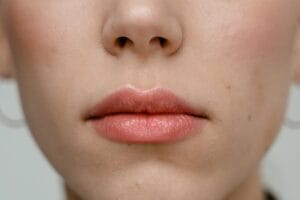How to Speed Up Rhinoplasty Recovery: Expert Tips & Timeline
So you just had rhinoplasty—or you’re planning one—and you’re wondering how to speed up the recovery process. I get it. Nobody wants to spend weeks looking like they went a few rounds with a boxing glove. The good news? Recovery isn’t just about waiting around and hoping for the best. There are actually things you can do to help your body heal faster and more comfortably. Some of these might surprise you.
Here’s what most people don’t realize: recovery happens in layers. It’s not one flat process where you just get better day by day. There’s this immediate phase (first 72 hours) where everything’s pretty intense, then an intermediate period where things settle, and finally this long-term phase where your nose really starts to look like… well, your new nose. Each stage needs a different approach, and that’s where people often miss opportunities to help themselves.
I’ve seen patients who follow these strategies bounce back noticeably faster than those who don’t. That’s not just anecdotal—there’s science behind it.
Understanding the Rhinoplasty Recovery Timeline
Before we get into the “how,” let’s talk about the “when.” What’s normal, and what should you expect?
I’ll be honest: the first 48 to 72 hours? That’s when you’ll look your worst. Swelling peaks, bruising shows up in all sorts of interesting colors (think purple, blue, maybe some green), and you’re probably wondering if this was a good idea. Here’s the thing—this is completely normal. Your body’s doing what it’s supposed to do: responding to trauma by sending in the inflammation crew. It’s annoying, but necessary.
Days three through seven usually bring some relief. That initial swelling starts dropping, bruising fades (it’ll go through color changes, kind of like a weird sunset on your face), and you can actually do light stuff again. You know, like walking around the house without feeling like you ran a marathon.
Week two? That’s when they usually take off the external splint. Your nose will look better, but here’s what’s happening that you can’t see: about 70 to 80 percent of the total swelling is still hanging around. It’s just deeper in the tissues now, so it’s not as obvious. Still, you’ll probably notice that your face looks different in photos than in the mirror. That’s normal too.
Weeks three through six are interesting. The swelling’s getting subtler, but it’s also more persistent. You might wake up looking more puffy than you did before bed, especially if you got less sleep or did more activity the day before. It’s frustrating, I know, but it’s part of the process.
The three to six month mark is when things really start settling. Your nose begins to look more like what it’s going to be. But subtle changes keep happening—that’s your body still working behind the scenes. By one year, you’re at about 90 percent healed. The last 10 percent? That happens over months and years as collagen matures and everything fully settles.
Here’s what surgeons don’t always mention (they’re busy people): complete healing takes time. But you can absolutely influence how comfortable and fast that process is.
Immediate Post-Operative Care: The First 72 Hours
Alright, let’s talk about those first three days. This is where the foundation gets set for everything that comes after. Your body’s basically in full-on inflammation mode right now, and what you do (or don’t do) during this window affects everything: how long you stay swollen, how much it hurts, and how smoothly the whole recovery goes.Elevation is Non-Negotiable
I’m not messing around here—elevation matters. A lot. Sleep with your head at a 45-degree angle. For the first week, definitely. Two weeks if you can manage it. Why? Gravity. Simple physics, but it makes a huge difference. When your head’s elevated, fluid has somewhere else to go besides your face.
Most surgeons will tell you to stack two or three pillows. That works, but I’ll let you in on a secret: a wedge pillow is better. It maintains the angle even when you shift around at night. You’re going to shift—everyone does—and regular pillows tend to flatten out. The wedge keeps doing its job.
During the day, think about how you move. Bending over to pick something up? Bad idea. It sends blood rushing to your face, which increases swelling and can even trigger bleeding. Bend at the knees instead. Yeah, it looks a little awkward, but your face will thank you.Cold Compress Strategy
Ice packs are your friend—but only if you use them right. Apply them to your cheeks and around your eyes (not directly on the nose, that can mess with things). The timing matters: 15 to 20 minutes every hour during the first two days, but only when you’re awake. Don’t set alarms to wake yourself up for ice application. Sleep is more important.
Don’t go overboard, though. Too much cold can actually slow healing by constricting blood vessels too much. After 48 hours, you can usually switch to room-temperature compresses or skip them entirely. Your surgeon will tell you what’s best for your specific situation. Some people skip the cold entirely after day two and do just fine.Managing Pain and Discomfort
Pain’s weird—it hits everyone differently. Some people sail through with barely any discomfort. Others feel like they got hit by a truck. There’s no “normal” here, so don’t compare yourself to that friend who said it was “no big deal.”
Your surgeon will give you pain meds. Here’s the trick: take them before you need them, at least for those first 24 to 48 hours. Don’t wait until you’re already hurting. Stay ahead of the pain curve. After that initial period, you might be able to switch to over-the-counter stuff, but check with your surgeon first.
Oh, and about the other stuff that can make you uncomfortable: avoid anything that puts pressure on your sinuses. Blowing your nose? Skip it if you can (saline mist is your friend). Straining during bowel movements? That’s going to make your face feel worse. Constipation’s super common with pain meds, so ask your surgeon about stool softeners. Seriously, it matters. That facial pressure from straining affects swelling and comfort way more than you’d think.Nutrition Matters from Day One
You’ve probably heard people talking about eating pineapple (for the bromelain) or using arnica for bruising. I used to think this was just internet advice, but there’s actually science behind it. The catch? They work best if you start them before surgery or right after. Don’t wait until you’re already swollen.
Bromelain—that enzyme in pineapple—does help with inflammation. Arnica, whether you take it orally or use it topically, can help minimize bruising when you use it correctly. But here’s the thing: these are supplements to good nutrition, not replacements for it.
Hydration’s huge. If you’re dehydrated, healing slows down and swelling gets worse. Drink water. A lot of it. At least eight glasses a day, maybe more if your meds are making your mouth dry. Eat real food too—lean proteins (your body needs those amino acids to rebuild), vitamin C (collagen formation depends on it), and zinc-rich foods (helps with wound healing).
What to avoid? Alcohol, completely, for at least two weeks. It thins your blood, increases swelling, and generally messes with healing. Also, watch the salt. I know, it’s hard when you’re craving comfort food, but sodium makes you retain fluid, which means more swelling. Give your face a break and skip the salty snacks for a bit.
Reducing Swelling: Evidence-Based Approaches
Swelling. It’s the thing that sticks around longest, and honestly, it’s probably the most annoying part of recovery. The good news? You actually have more control over it than you might think.The Role of Supplements
Let’s talk supplements. There are a few that can help with swelling, but—and this is important—always run them by your surgeon first. Don’t just start popping pills because someone online said it worked for them.
Bromelain (500 to 1,000 mg, three times a day) can help reduce inflammation, especially if you start it a few days before surgery or right after. Arnica? The evidence is a bit mixed, but some people swear by it (both oral and topical forms). Vitamin C supplements (1,000 to 2,000 mg daily) support collagen production, though if you’re already eating well, you might not need them.
Here’s one that doesn’t get talked about much: zinc. If you’re deficient, supplementing can help with immune function and wound healing. But don’t go crazy with vitamin E right after surgery—high doses can mess with clotting. Your surgeon might recommend it later in the process, but early on, skip it.Activity Level and Its Impact
You can’t just lay in bed all day, but you also can’t go running or lift weights. There’s a sweet spot.
Light walking? Start that within 24 hours. It helps circulation, which reduces swelling and prevents blood clots (a real concern after surgery). But “light” is the key word here. We’re talking a stroll around your house or yard, not a power walk through the neighborhood.
When can you do more? Light exercise around week three, moderate stuff by week six, and full activities (including contact sports) after three to six months. Your surgeon will give you specifics based on your case.
I’ve seen patients who feel great by week two and decide they’re fine to resume normal activity. Then they wake up the next morning wondering why their face looks like a balloon. Increased blood flow from exertion causes swelling to surge, and it’s especially noticeable the morning after. Your body’s still healing—respect that. If something makes you more swollen or uncomfortable, back off.Sleep and Stress Management
Sleep quality matters way more than most people realize. When you’re in deep sleep, your body releases growth hormone and other healing factors. Poor sleep does the opposite—it increases cortisol, which slows healing and ramps up inflammation. Not ideal when you’re trying to heal.
Set up a sleep routine early. Keep that elevated position, obviously. If dry air’s making your nose feel weird, try a humidifier. And put the phone away before bed—screens mess with sleep quality, and you need all the quality sleep you can get right now.
Stress? Yeah, it interferes with healing too. I know, easier said than done when you’re uncomfortable and maybe freaking out a bit about how things look. But stress = more cortisol = slower healing. Meditation helps some people. So do breathing exercises, or just listening to calming music. Whatever works for you. I’ve had patients who downloaded meditation apps during recovery and actually kept using them afterward—turns out stress management has benefits beyond just healing.
Managing Bruising: What Actually Works
Bruising is a weird one. Some people barely get any. Others look like they went through a windshield (though thankfully, that’s less common). It depends on your surgeon’s technique, how sensitive your skin is, and just… your body being your body. You can’t completely eliminate it, but you can definitely minimize it.Topical and Oral Treatments
Arnica gel or cream? Worth trying. Apply it gently to the bruised areas (stay away from incision sites) once your surgeon gives you the green light, usually after the first few days. Oral arnica tablets might help too—the research isn’t super conclusive, but some people find them useful. Follow the package directions.
Vitamin K creams exist, but the evidence is weaker. Some people like them, but don’t expect miracles. What does help is getting enough vitamin K in your diet (think leafy greens). It supports normal clotting, which is important.Makeup and Camouflage
Here’s the thing about makeup: once your surgeon approves it, it can help. But wait until those external sutures are out and any external incisions have closed. Use mineral-based stuff and be gentle. Really gentle. And avoid the nose itself.
Color correction works. Green-tinted concealers neutralize redness; yellow-based ones help with blue and purple tones. It’s not perfect, but it can make you feel a bit more human.Patience and Perspective
Most bruising clears up within two weeks. Some subtle discoloration might hang around longer, and that’s normal. When you’re in the middle of it, two weeks feels like forever. I get it. But your body’s reabsorbing blood that leaked into tissues, and that’s a process you can’t rush. Do what helps, and accept that some things just need time.
Optimizing Long-Term Healing: Weeks Three Through Twelve
Once you get past those first couple of weeks, recovery changes. The swelling’s still there, but it’s different. More subtle. More persistent. And honestly? This is when a lot of people start getting frustrated. They think they should be “done” by now, but healing’s still happening.Understanding Residual Swelling
Here’s what’s going on: at week three, what looks like “final results” swelling is actually just the start of deeper tissue healing. Your nose has layers—skin, soft tissue, cartilage, bone. Each one heals at its own pace. The superficial stuff goes away first (that’s why you looked so much better by week two), but then things seem to plateau. That deeper swelling? It takes months. Especially in the tip, where tissue is thicker.
Morning swelling? That’s normal. Throughout the first year, actually, though it gets less noticeable over time. Sleeping elevated helps, but some morning puffiness is just… part of it. Usually clears up within a few hours of waking.Massage and Manual Techniques
Some surgeons recommend gentle massage to help with residual swelling. Don’t just start doing it on your own, though—ask your surgeon specifically about techniques and timing. If they approve it, gentle stroking in specific directions can help mobilize fluid. But if you do it wrong? You could potentially mess with healing or results. Not worth the risk.Sun Protection and Scar Management
Sun protection isn’t optional. It’s not just about avoiding sunburn—UV exposure can increase swelling and cause permanent discoloration in healing skin. Use broad-spectrum SPF 30 or higher. For at least six months, ideally a year. Hats are even better. I’m serious about this one—permanent discoloration isn’t something you want to deal with.
Got external incisions? Scar management starts once healing’s complete. Silicone gel or sheets, used consistently, can really help. Your surgeon will tell you when to start, usually around three to four weeks post-surgery.
Common Recovery Concerns and Realistic Expectations
Asymmetry During Healing
One side might swell more than the other. Or healing might progress at slightly different rates. That’s normal, and it usually evens out as swelling decreases. But if something looks really off to you, take photos and bring it up at your follow-up appointments. Most of the time, what looks like asymmetry in early recovery is actually just uneven swelling, not a structural problem.Numbness and Sensation Changes
Some numbness is totally expected, especially in the tip. It can last months—sometimes up to a year. Sensation comes back gradually as nerves regenerate. Some people get heightened sensitivity first, then numbness. Weird, I know, but it’s your nervous system reorganizing. Usually temporary.Breathing and Congestion
Congestion’s super common. Weeks, sometimes months. Part of it’s internal swelling, part of it’s changes in your nasal anatomy. Saline sprays help—they keep things moist and clear out mucus. Don’t blow your nose aggressively, though. Gentle dabbing until your surgeon says otherwise. If congestion gets worse or doesn’t improve, call your surgeon. Could be something else going on. Emotional Aspects of Recovery
Nobody really talks about this, but the emotional side of recovery is real. During the swollen phase, you might second-guess everything. Fixate on things nobody else notices. That’s when realistic expectations and a good support system really matter. Remember: you’re judging results while you’re still actively healing. Cut yourself some slack.
Warning Signs: When to Contact Your Surgeon
Most recoveries are smooth, but sometimes things go sideways. If you notice any of these, call your surgeon:
- Sudden, big increase in swelling or pain
- Signs of infection: redness that’s getting worse, warmth, pus, or fever
- Bleeding that won’t stop with gentle pressure
- Vision changes or a severe headache
- Breathing problems beyond the usual congestion
- Excessive scarring or wounds that look weird
Trust your gut. If something feels off, call. Don’t wait and hope it gets better. It’s always better to check in and have them say “that’s normal” than to ignore something that needs attention.
The Final Phase: Months Six Through Twelve
By six months, you’re mostly there. Most of the visible healing is done, and your nose has settled significantly. You can actually start evaluating results now, though some subtle settling still happens over the next six to twelve months.
Tip swelling can hang around longest, especially if you’ve got thicker skin. That’s normal—doesn’t mean something’s wrong. Your surgeon will keep an eye on things at follow-up appointments and can address any concerns you have about final results.
I’ve even seen patients notice subtle improvements beyond the one-year mark. That’s collagen fully maturing and tissues finishing their reorganization. It’s why most surgeons won’t even talk about revision surgery until at least a year has passed—they want to see where things end up.
Wrapping Up
Rhinoplasty recovery isn’t just about waiting around. It’s an active thing—a partnership between you, your body, and your surgical team. The stuff that speeds recovery isn’t rocket science, but it does take consistency and patience. Elevation, good nutrition, appropriate activity, and following your surgeon’s instructions. That’s the foundation.
Here’s what I’ve learned watching patients go through this: recovery isn’t just physical. It’s also about learning to work with your body instead of fighting it. All that swelling, bruising, and discomfort? Temporary. The result, when you support it properly, can last a lifetime.
Last thing: don’t compare yourself to other people. Everyone’s timeline is different. Those before-and-after photos online? They’re not telling the whole story. Focus on your own healing, talk to your surgeon when you need to, and trust the process. The nose you see at week two isn’t the nose you’ll have at month six. And that’s exactly how it should be.














Post Comment